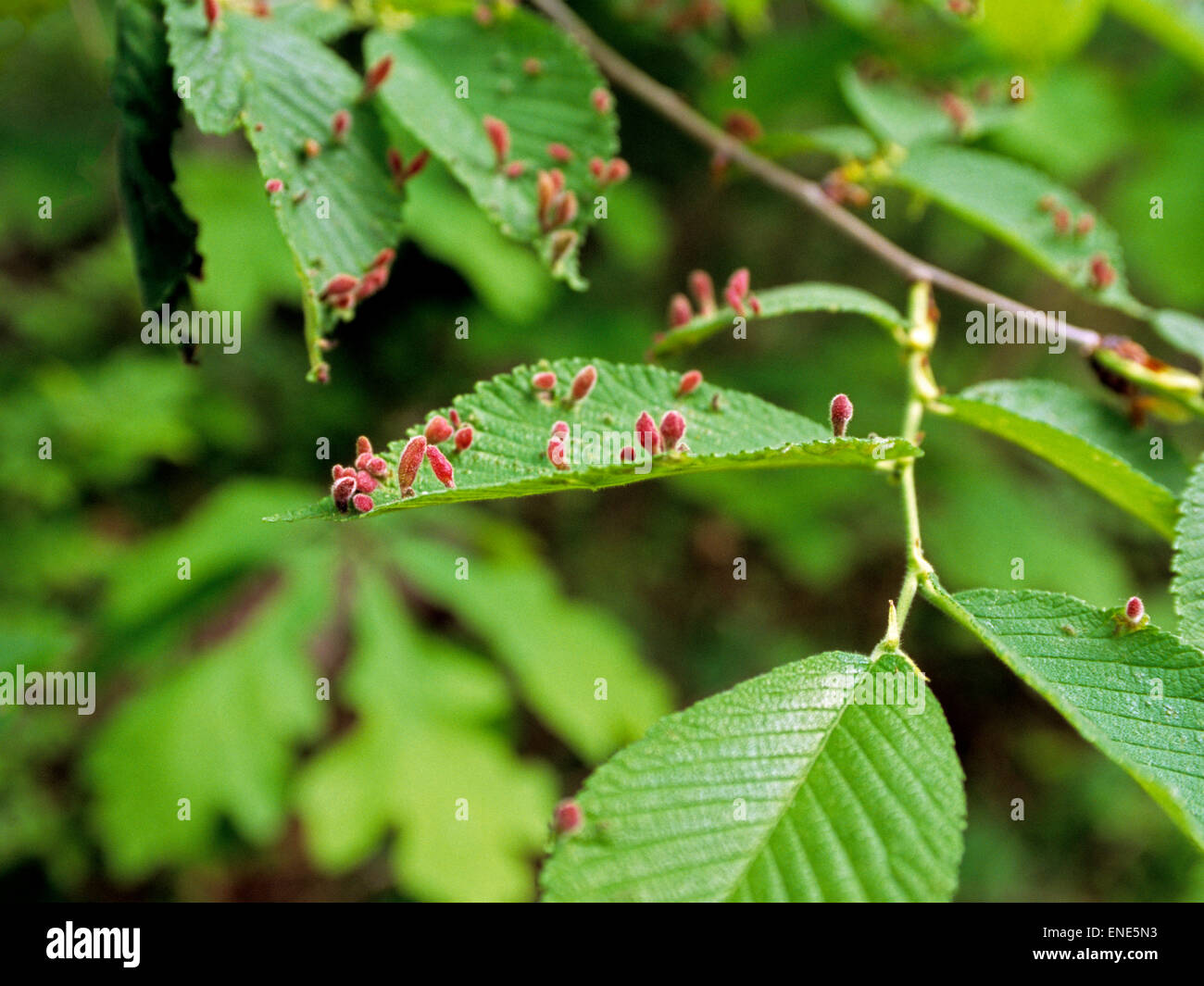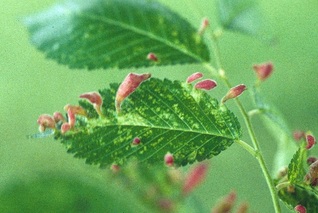Lime nail galls are caused by a mite. They are unsightly and remain on the tree over the winter.

Gall Mite On Elm Leaf Stock Photo Picture And Rights Managed Image Pic Gwg Bev3389 Agefotostock
Full bloom with a baby starting.
Elm gall mite. Gall growth is stimulated in spring by females injecting saliva into new elm leaves. Changes in the accumulation of carotenoids may be associated with the adaptive processes in the tissues affected by the gall mites. Gall growth is stimulated in.
Elm cockscomb gall aphid Colopha ulmicola and C. Erineum galls consist of hair-like growths on the leaf surface Figure 1 whereas pouch galls are pouch-like deformities that form in depressions in the leaf surface Figure 2. Gall mites also known as eriophyid mites are minute animals usually less than 02mm long when fully grown.
Their size means they can usually only be seen with the aid of a microscope. You can copy this taxon into another guide. Mites then move into these galls of swollen leaf tissue on the under-sides of leaves.
Their presence is readily detected by the distinctive abnormal plant growths induced by their feeding activities. X Copy guide taxon to. Elm Bladder or finger-type leaf galls Mite Eriophyes ulmi Ficus Leaf.
Once stimulated the plant produces gall tissue to surround the egg or immature insect or mite. Many galls have a simple descriptive name and this is as simple as it gets the Elm Leaf Finger Gall. These are caused by Eriophyid mites tiny creatures less than a half millimeter long.
X Copy guide taxon to. The larvae live and feed in the galls until late summer when they leave to. The galls are initially green then dry and turn brown.
As it grows the gall and the insectmite use nutrients from the host plant. There are over 3600 species described with many more out there. Adult elm eriophyid mites are erinea forming mites.
The gall is called the Elm Finger Gall and its caused by a mite called Eriophyes ulmi. Mites make these tiny galls 2 mm on the leaves of American Elms Ulmus americana. The three major groups of insects.
Elm bead gall mite is a specialized plant feeder. This gall is caused by a small mite that causes irregular distortion of male flowers. The female mite feeds from the new leaves of lime trees in spring causing galls to form.
Other gall mites cause deformities to flowers and buds Figures 3 and 4. Adults have only two pairs of legs and are less than 1 mm in length so a hand lens is needed to confirm their presence. After colonization with gall mites the content of carotenoids decreased by 1216 only in the leaves of rowan and elm trees.
If you find an elm in an Ohio woodland thats festooned by these odd looking galls its highly likely the gall-adorned tree is a red elm slippery elm Ulmus rubra. Carotenoids are known to perform a protective function in cells and are low-molecular-weight antioxidants. Galls can be caused by feeding or egg-laying of insects and mites.
The galls are solitary they do not coalesce into larger galls. Gall growth is perpendicular to the surface of the elm leaf. It is found exclusively on American elm.
The Elm Pocket Gall is produced by small mites that belong to the genus Eriophyes. The green to reddish elongated galls are produced on the upper surface of American elm leaves. If you are one of the editors of this guide it should copy everything but if youre not it will only copy the licensed content.
Control is generally not suggested. In other tree species the level of yellow pigments did not change. A dormant oil treatment may be effective.
That picture as well as the one at the left showing Maple Spindle Galls caused by yet another species of gall mite are. Each gall can contain hundreds of larvae by the end of summer. They are produced by another aphid Colopha ulmicola.
The galls are shaped like tiny bead-like pustules. Galls can be induced by secretions from developing eggs or larvae by saliva or other substances associated with feeding by insect or mite excretions or simply by the presence of the insect or mite in or on the plant tissue. You can copy this taxon into another guide.
She comes back at a later date when the pouch is partly formed and lays her eggs inside. Elm Cockscomb Galls are also helpful but a little less trustworthy. Its almost a sure-fire identification.
Insect galls rarely affect plant health and their numbers vary from season to season. If you are one of the editors of this guide it should copy everything but if youre not it will only copy the licensed content. These mites overwinter in bark crevices of the host as fertilized females.
These gall inducers are less than 02 mm long however the chemicals they release while sucking the sap from the lower leaf epidermis have a dramatic consistent and colourful effect causing upward growing hollow yellow red or pink finger-like extensions. Galls are abnormal plant growths caused by insects mites nematodes fungi bacteria and viruses. Elm Gall Mite - Aceria campestricola.
It produces small variable globular yellowish-green bead-like galls on the upper surface of the leaves. Each red gall is known as a pouch gall. Gall mites are usually found in erineum galls and various types of pouch galls often on the buds of leaves.
And we all know that mites arent insects but rather are related to eight-legged ticks and spiders. They have elongate bodies and two pairs of legs unlike other mites which have four pairs.

Elm Finger Gall Mite Brandeis University Non Holometabolous Arthropods Insects Spiders Millipedes Centipedes Crustaceans Amp Others Inaturalist

Galls And Tree Identification Bygl

Slippery Elm Leaf Galls Tetraneura Bugguide Net

Eriophyid High Resolution Stock Photography And Images Alamy

Galls And Tree Identification Bygl

Elm Gall Mite Aceria Campestricola By Christine Young Jungledragon
Minnesota Seasons Elm Finger Gall Mite

Photos Of Elm Finger Gall Mite Aceria Parulmi Inaturalist

Category Elm Pocket Gall K State Horticulture Newsletter

Galls And Tree Identification Bygl

Elm Gall Mite Aceria Campestricola By Christine Young Jungledragon
Minnesota Seasons Elm Finger Gall Mite

Elm Finger Gall Mite Aceria Parulmi Inaturalist





